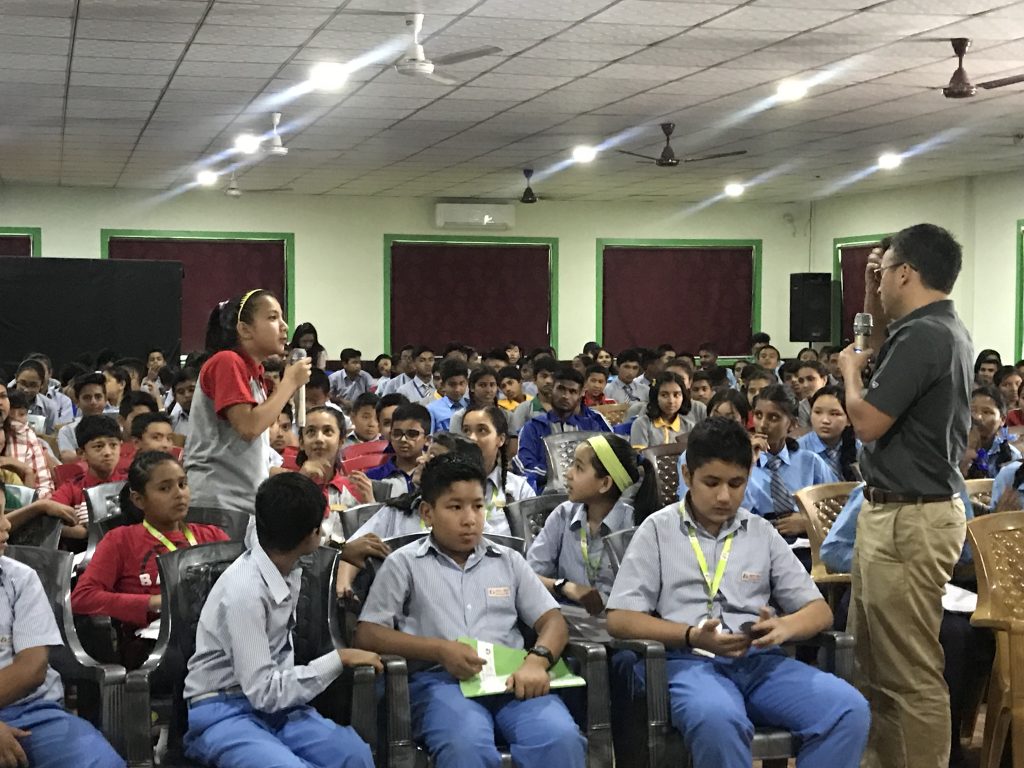Did you know that 9 people die every day in Kathmandu Valley due to air pollution? Can you guess Kathmandu’s two major sources of PM 2.5 pollutant, that are known to cause strokes, heart disease and chronic respiratory issues? It’s not the dust! When do you think is the safest time to go outside in Kathmandu, in terms of air quality?

Image Credit: Stephen Groves/PRI
Over the past year, Drishti volunteers started to realize that many Kathmandu residents were either unaware or misinformed about the nature and severity of Kathmandu’s air pollution. Drishti has been advocating with politicians and local decision makers to enforce policies to mitigate vehicle emissions and curb open waste burning (the two largest sources of PM2.5 pollutants in the valley). However, the movement is in dire need of informed and vocal champions. For the members of Drishti, they believe that every single Kathmandu resident should be able to check their air quality level like they check the weather. The reality however is that most people do not even realize that their morning walk or outdoor run puts their health is serious jeopardy. In Kathmandu Valley, 6am to 10am is when the air is most polluted and unsafe. Drishti Kathmandu hopes that a better informed public will help put pressure on decision-makers to take immediate action against Kathmandu’s air pollution crisis.

Realising the public’s gap in information, Drishti began a small grassroots awareness campaign effort. Drishti Kathmandu recently launched the ‘Our Air’ video competition across Kathmandu Valley challenging students from grades 8 through 12 to make a 2 minute video. The goal of their video: to dispel myths and give more accurate information about Kathmandu’s air quality to the general public. Drishti reached out to both public and private schools throughout the Valley. Schools that expressed interested in the competition were offered educational workshops on the science behind air pollution, storytelling and community engagement, as well as video making. Each school was allowed to submit up to three 2-minute videos that included three core elements: i) a story of how air pollution affected the people around them ii) highlight innovative solutions for their communities, and iii) a call to action for decision makers.
November will mark the culmination of the video competition. Now Drishti is gearing up to host a celebratory screening of the top 10 ‘Our Air’ videos for a larger audience at the end of month. A special panel of judges will decide the top 5 videos, and these student groups will be given special prizes including an air quality monitor ‘Laser Egg’ to continue their efforts in educating themselves and the people around them about Kathmandu’s air quality. The event audience will include select schools, environmental organizations and other champions of air quality, as well as local decision makers. Furthermore, the top 10 videos will also be posted on youtube for the general public to view and share. Drishti Kathmandu will work to have these videos reach as many Kathmandu residents as possible by showcasing these videos on their social media page, website and partnering up with local news and radio outlets.

If you are interested in attending the video screening event or sponsoring a laser egg to help set up air monitoring stations at different schools, please email [email protected]. If you are interested in joining as a member of Drishti Kathmandu or would like access to their air quality data for research purposes, please message them on Facebook @drishtikathmandu.
Drishti is a citizen’s movement founded by concerned residents who decided to raise their voices collectively and raise awareness about toxic air pollution in the Kathmandu valley. The group makes real time data on air quality collected from their network on air monitoring stations across Kathmandu valley accessible to the public. You can find hourly measurements of Kathmandu’s daily air quality levels via Nagarik and Republica newspaper, or keep track of live air quality data on their website: http://drishti.live/#/










